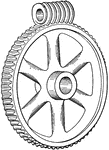
Nervous System of the Flatworm
Nervous system of a flatworm. Labels: G, cerebral ganglia and eyes; St, the two lateral nerve trunks;…

Peanut Worm - Interior Anatomy of Adult
Sipunculus nudus. A species of unsegmented marine worm, commonly called the peanut worm. "A, One fourth…

Peanut Worm - Interior Anatomy of Larva
Sipunculus nudus. A species of unsegmented marine worm, commonly called the peanut worm. "B, Larval…

Polymoë
"Elytrum of Polymoë, a polychaetous annelid, bearing fimbriae, viewed from above." -Whitney, 1911
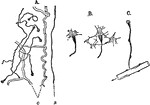
Protonephridium
Structure of the protonephridium (excretory organ) of a flatworm. A, part of the excretory apparatus…

Protonephridium of a Shark
Structure of the protonephridium (excretory organ) of a shark. Labels: Wtr, ciliated funnels; Ug, segmental…

Protonephridium of an Annelid
Structure of the protonephridium (excretory organ) of an annelid. Labels: Wtr, ciliated funnels; Ds,…

Roundworm
In the Trichina, a parasitic roundworm, the bodies of several animals, particularly the rat, are host…
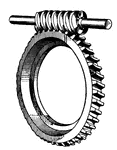
Screw-and-Worm Gearing
Screw-and-Worm gearing is a type of gearing in which the velocity ratio is independent of the radii…

Types of Seashore Life
24. Various corals, 25. Razor-shell, 26. Cockle, 27. Various winkels, 28. Shore crab, 29. Father lasher,…
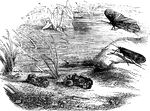
Great Red Sedge and Larva
"The Phrygania striata is over an inch long, of a fawn-color, with the exception of the eyes,…

Serpula
"Serpula, a genus of Polychaete worms of the family Serpulidae, whose members construct coiled calcareous…
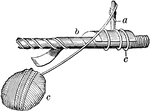
Serving Mallet
"A semicylindrical piece of wood, fitted with a handle...used for convenience in serving ropes...to…

Silkworm Moth, Caterpillar, and Chrysalis
"This important insect is a native of the north of China; and a great portion of the supplies of silk…
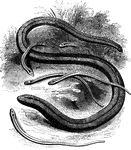
Slow-worm
Common in Europe, the slow-worm resembles a snake, but its internal structure is that of lizards.
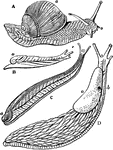
Snail and Slug
A series of Stylommatophorous Pulmonata, showing transitional forms between snail and slug.

Still
"A "still;" and, for condensing the vapor, vats are constructed, holding serpentine pipes or "worms,"…
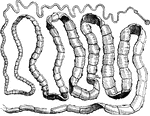
Tape-worm
"The body is composed of numerous joints or segments, each one resembling the others; these are often…
Tapeworm
Echinobothrium typus is a species of tapeworm distinguished by two fossettes with hooks on its head.

Tapeworm
The cestodes or tapeworms (Toenia solium), are parasitic flatworms. The body is usually of great length…
Threadworm
Threadworm (Nematodes) or Roundworm is composed of many different species. In all the body is slender…

Trichina Spiralis
"Trichina Spiralis is the name given to a peculiar nematoid worm which inhabits the muscles, usually…

Trichina Spiralis
"Trichina Spiralis is the name given to a peculiar nematoid worm which inhabits the muscles, usually…
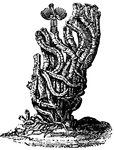
Calcareous Tubeworm (Serpula)
This worm is also called a fan worm, plume worm or red tube worm. "A Linnean genus of worms, subsequently…
Army Worm
The Fall Army Worm (Spodoptera frugipeda) is part of the order of Lepidoptera and are the caterpillar…
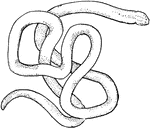
Nemetean
Band or Nemetean worms have been discovered in damp soil or in fresh-water streams. These are commonly…

Nemetean
Band or Nemetean worms have been discovered in damp soil or in fresh-water streams. These are commonly…

Tobacco worm
"The caterpillar of which, commonly known as the tobacco-worm in the Middle States, is very destructive…
Worms
This illustration shows a worm. Worms have an elongated soft-body. The most famous is the earthworm,…
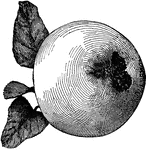
Wormy Apple
"A wormy apple, showing the familiar mass of brown particles thrown out at the blossom-end by the young…
